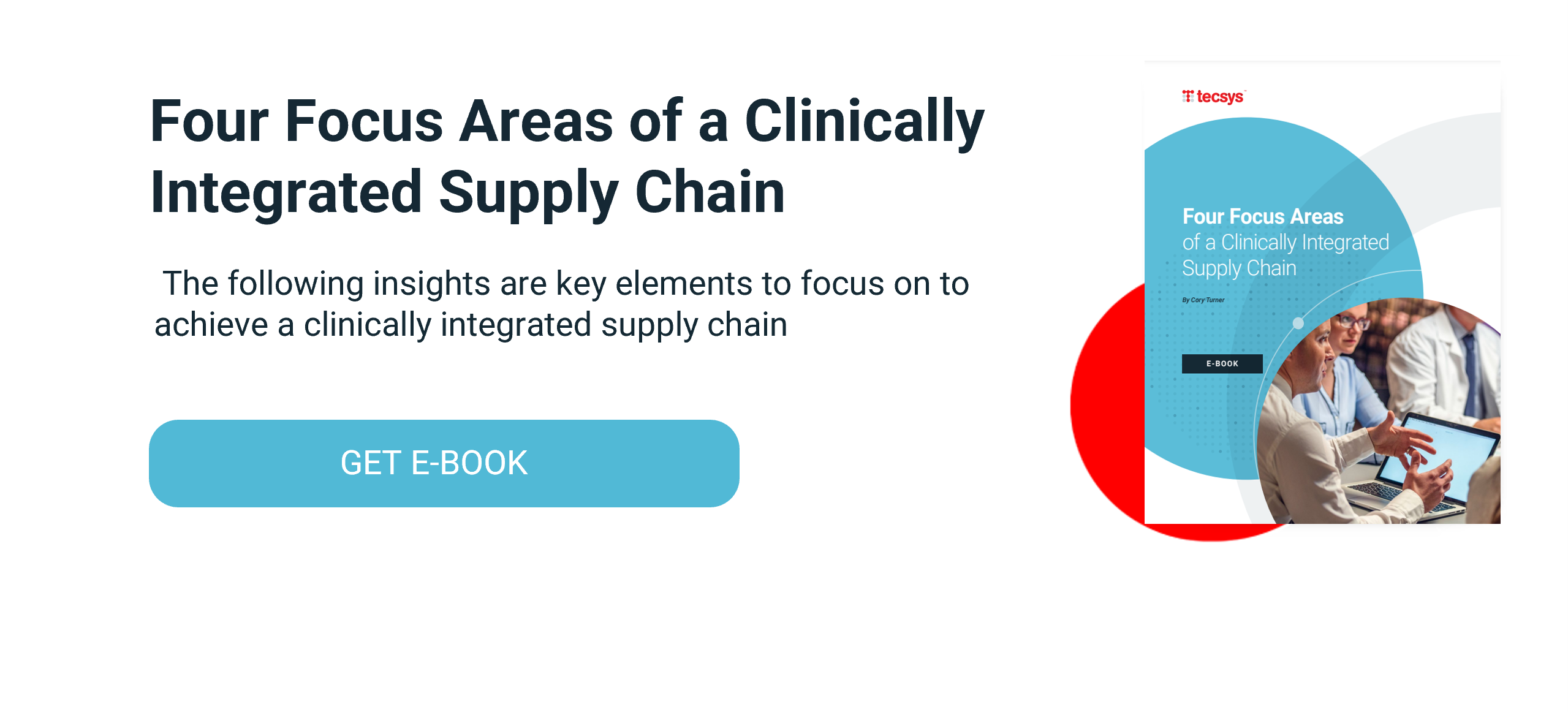Evolving the Healthcare Supply Chain: A Proactive Approach

This article was originally published on Healthcare Business Today
Warren Buffett once said, “Someone is sitting in the shade today because someone else planted a tree a long time ago.” Investors like Buffett know a lot about planning ahead, yet it is sometimes difficult to look past the obstacles right in front of us to prepare for the future.
The last three years have been difficult, especially in healthcare. We’ve learned some valuable lessons, not the least of which is that we need to be better prepared for whatever might come our way. To do that, we need to evolve the way we think about the healthcare supply chain, and we need to use the tools and data that already exist to transform our mindset from reactive to proactive.
We all remember when the pandemic first started. The healthcare community faced severe shortages in personal protective equipment (PPE) and other vital supplies, but we reacted to the best of our abilities. Those issues were resolved through increased supplier production and emergency manufacturing in the private sector, but they highlighted the need to be better prepared before the next disruption, whether it is another pandemic, a natural disaster or even a local disease outbreak. As we finally come out of the COVID-19 pandemic, many hospital leaders are taking a step back and beginning to feel an urgency to make changes within their supply chain to increase resiliency, have better decision-making capabilities, improve forecasting and demand, and plan for situations more strategically.
A New Way of Thinking
Traditionally, supply chain leaders in hospitals have had the mindset of “we’re here to help the clinicians, but they have to tell us what they need before we can get it to them.” And they do that. Hospital logistics teams are filled with people who will jump through hoops to ensure clinicians get the materials they need to provide the best care to patients. However, supply chain leaders have relied upon dated inventory practices where clinicians and nurses place orders for consumable supplies, pharmaceuticals and higher-cost items like implants only as they are needed.
What has been lacking, from a supply chain point of view, has been an overall view of inventory from the time items arrive on the receiving dock to the moment they are used during a patient procedure. Oftentimes, consumable items such as underpads, IV bags or bedpans are tracked when ordered by stockrooms or nursing stations but not when they are consumed. This can lead to stockpiles at one station and shortages at another. The same is true for higher-cost items like implants and time-sensitive pharmaceuticals, where the potential for mistakenly using an expired item on a patient can’t be ignored.
In essence, we currently have a transactional system where the supply chain team spends most of its time just getting through the day-to-day activities and resolving issues like backorders, stockouts and lost inventory. Little time is invested in evaluating current performance and strategizing for future developments.
But it doesn’t have to be that way; it’s time for decision makers to take a proactive approach. There is a clear opportunity right now for supply chain leaders to play a strategic role by making data-driven decisions that will meet organizational goals, while promoting practices that have the best impact on patient outcomes.
Knowing What They’ll Need Before They Do
Most hospitals use an enterprise resource planning (ERP) system in the hopes of managing inventories throughout the hospital. However, ERPs only provide visibility into the medical and surgical supplies that were ordered and not what inventory is available or has been consumed in a case. So many hospitals deploy add-on systems such as point of use (POU) systems for inventory management in clinical areas. The issue supply chain leaders often face is that data is available, but the deployed systems are not integrated.
The best way forward is to deploy an end-to-end supply chain management (SCM) system that is integrated with the ERP, electronic health record (EHR) and POU systems to consolidate oversight for all of the supplies to the supply chain team.
By examining the real-time analytics provided by the SCM, the supply chain team can work with the patient care team to optimize processes so that the burden of supply tracking can be removed from the clinicians, giving them more time for patient care. For example, if the supply chain team can already see the types of patient cases (e.g., heart bypass or hip replacement) coming down the line, and the SCM provides the list of supplies most often used in these procedures, then there is no need to require the patient care team to place an order. The supplies can be provisioned in advance of the patient’s procedure, freeing the nursing staff from unproductive administrative tasks.
From a holistic point of view, taking a more proactive approach to the supply chain benefits everyone from the organization as a whole, to leadership, clinicians, caregivers and, ultimately, the patients.
Planting the Tree
Today, the C-suite, senior management and other stakeholders are recognizing the importance of stable supply chain operations to the clinical health of patients and the financial health of their organizations. The time is ripe for supply chain leaders to plant the tree that will provide benefits for years to come by implementing forward-thinking plans to leverage available software tools.




